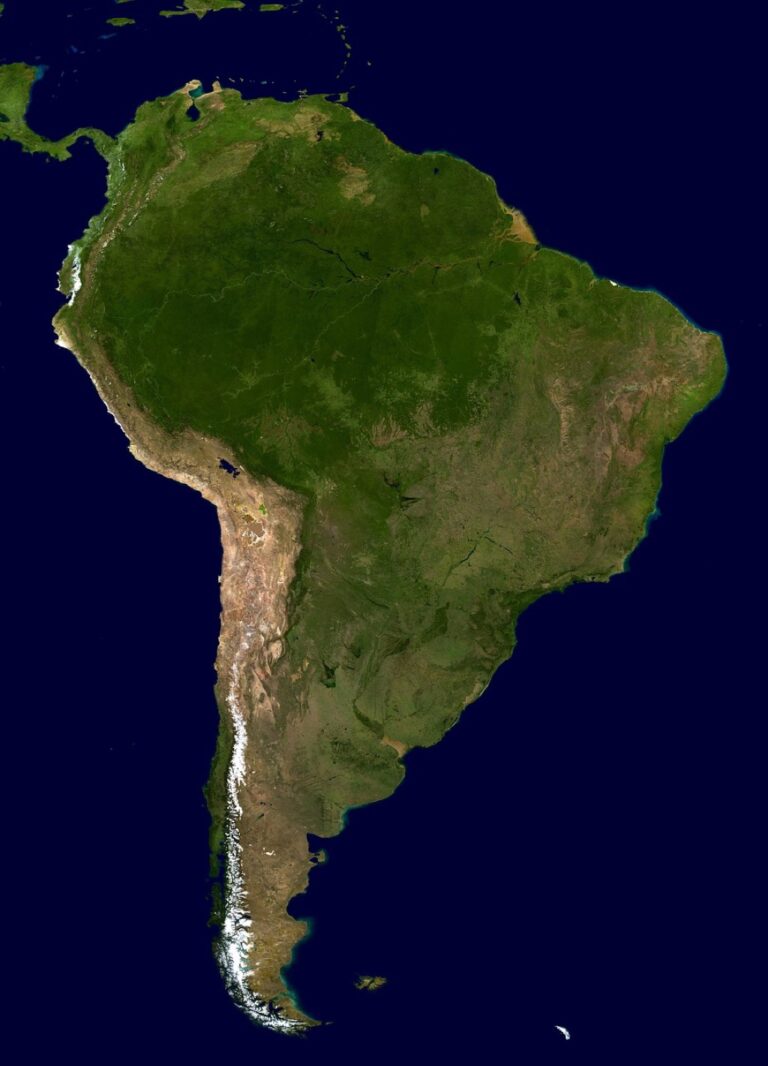5 Ways Colonialism Influenced Indigenous Mapping Practices Lost Forever
Why it matters: Colonial powers didn’t just claim territories — they fundamentally transformed how indigenous communities understood and represented their own lands through mapping practices.
The big picture: You’ll discover how European cartographic methods, land ownership concepts, and territorial boundaries reshaped traditional indigenous ways of documenting geographical knowledge that had existed for centuries.
What’s ahead: We’ll explore five key ways colonialism altered indigenous mapping traditions, from the introduction of Western geometric principles to the erasure of sacred site documentation systems.
Disclosure: As an Amazon Associate, this site earns from qualifying purchases. Thank you!
Colonial Cartographic Dominance Replaced Traditional Indigenous Navigation Systems
Colonial powers systematically imposed European mapping standards that fundamentally dismantled indigenous spatial knowledge systems. You’ll find that this cartographic imperialism created lasting disruptions to traditional navigation methods that had guided communities for thousands of years.
European Grid Systems Override Circular and Seasonal Mapping Approaches
European colonizers forced rectangular grid systems onto landscapes where indigenous peoples used circular and seasonal mapping patterns. You’d observe how traditional maps followed natural cycles like animal migration routes, seasonal plant harvests, and celestial movements rather than rigid geometric lines. Colonial surveyors ignored these sophisticated temporal-spatial relationships, replacing them with township and range systems that divided territories into uniform squares. This transformation eliminated indigenous knowledge of how landscapes changed throughout seasons, disconnecting communities from their ancestral navigation wisdom that integrated astronomy, ecology, and geography into cohesive wayfinding systems.
Linear Boundary Concepts Conflict With Fluid Territorial Understanding
Colonial mapping introduced fixed linear boundaries that directly contradicted indigenous concepts of fluid, overlapping territorial relationships. You’ll discover that many indigenous communities understood territories as dynamic zones with seasonal usage rights shared between multiple groups rather than permanent property lines. European cartographers drew precise borders using surveying instruments, creating artificial divisions that ignored traditional resource-sharing agreements and seasonal migration patterns. This rigid boundary system disrupted centuries-old diplomatic relationships between tribes, forcing communities to adapt their movement patterns to conform to colonial land ownership concepts that fundamentally misrepresented indigenous territorial governance.
Forced Documentation Transformed Oral Geographic Knowledge Into Written Records
Colonial administrators systematically recorded indigenous geographic knowledge that had previously existed only in oral traditions. This documentation process fundamentally altered how indigenous communities preserved and transmitted their spatial understanding.
Sacred Geographic Information Becomes Accessible to Colonial Authorities
Sacred geographic information once protected through oral traditions became permanently accessible to colonial authorities through forced documentation. Indigenous communities traditionally shared sacred site locations and spiritual landscape meanings only with designated knowledge keepers within their communities.
Colonial administrators demanded written records of these sacred places, breaking centuries-old protocols that protected spiritual geography. Missionaries and government officials documented sacred mountains, burial grounds, and ceremonial sites without understanding their spiritual significance or cultural restrictions.
Loss of Contextual Meaning Through Translation and Transcription
Translation and transcription processes stripped indigenous geographic knowledge of essential contextual meanings embedded in original languages. Indigenous place names often contained complex ecological, historical, and spiritual information that couldn’t be accurately captured in colonial languages.
Colonial scribes frequently shortened indigenous place names or replaced them entirely with European equivalents, eliminating generations of accumulated knowledge. Seasonal geographic references, traditional harvesting locations, and migration route descriptions lost their nuanced meanings when translated into rigid colonial documentation systems.
Imperial Land Surveying Methods Imposed Western Property Concepts
Colonial administrations introduced European surveying techniques that fundamentally restructured how indigenous communities understood land relationships. These methods prioritized measurable boundaries and individual ownership over traditional communal stewardship practices.
Individual Ownership Models Replace Communal Land Management Systems
European property laws transformed indigenous territories into privately owned parcels. Colonial surveyors divided communal lands using rectangular grid systems that ignored traditional seasonal usage patterns. Treaties forced indigenous leaders to assign individual ownership titles to tribal members, breaking apart centuries-old collective resource management. Government land offices required indigenous families to register specific plot boundaries, replacing flexible territorial arrangements with fixed property lines. Legal frameworks prevented traditional practices like shared hunting grounds and seasonal camps that required multiple family groups to access the same areas throughout different seasons.
Geometric Precision Overrides Relationship-Based Territorial Markers
Surveyor instruments replaced indigenous boundary markers based on natural features and cultural relationships. Colonial mapping teams used theodolites and chains to create straight-line boundaries that cut across rivers, hills, and sacred sites that traditionally defined territorial limits. Indigenous communities marked territories using seasonal markers like eagle nesting sites or salmon spawning areas, which colonial surveyors ignored in favor of mathematical coordinates. European mapping standards required permanent monuments and concrete markers that disrupted indigenous practices of flexible boundary recognition based on ecological cycles and diplomatic agreements between neighboring communities.
Resource Extraction Mapping Shifted Focus From Cultural to Economic Geography
Colonial resource extraction fundamentally transformed indigenous mapping priorities from cultural preservation to economic exploitation. You’ll find that colonial administrators created maps specifically designed to locate and extract valuable resources while systematically ignoring indigenous sacred sites and cultural landscapes.
Mining and Logging Maps Prioritize Commodity Locations Over Sacred Sites
Mining companies mapped ore deposits and timber stands without consulting indigenous knowledge of sacred burial grounds or ceremonial sites. You’ll discover that colonial surveyors marked valuable mineral veins and forest resources using grid coordinates that cut directly through indigenous spiritual landscapes. European extraction maps identified profitable locations like gold deposits near rivers or old-growth timber stands but omitted indigenous markers for vision quest sites or ancestral gathering places. Colonial administrators required detailed commodity inventories showing resource quantities and extraction routes while prohibiting documentation of indigenous sacred geography in the same areas.
Transportation Routes Facilitate Colonial Access Rather Than Indigenous Movement Patterns
Colonial transportation mapping prioritized efficient resource extraction over traditional indigenous travel routes that followed seasonal migration patterns. You’ll notice that railroad companies and colonial governments designed straight-line routes connecting mining sites to ports without considering indigenous pathways that curved around sacred sites or followed animal migration corridors. European engineers built roads and railways that cut through traditional hunting grounds and ceremonial areas to reduce transportation costs for extracted timber and minerals. Colonial maps showed proposed railway lines and wagon roads designed for heavy machinery access but ignored indigenous foot trails that connected communities through culturally significant landmarks and seasonal camps.
Educational Suppression Disrupted Indigenous Geographic Knowledge Transmission
Colonial education systems systematically dismantled traditional methods of teaching geographic knowledge within indigenous communities. These policies created lasting gaps in cultural transmission that persist today.
Colonial Schools Eliminate Traditional Wayfinding Education
Colonial boarding schools prohibited indigenous children from learning traditional navigation methods used by their ancestors for centuries. Students couldn’t practice star navigation, seasonal landmark recognition, or natural compass techniques that elders typically taught through hands-on experience. Teachers replaced indigenous wayfinding stories with European geography lessons that focused on abstract map reading rather than direct landscape interaction. Punishment systems discouraged students from discussing traditional travel routes or seasonal migration patterns with classmates. These restrictions severed the generational chain of knowledge transfer that connected indigenous youth to their territorial understanding.
European Cartographic Training Replaces Indigenous Spatial Learning Methods
Colonial administrators established mapping schools that taught only European cartographic principles while dismissing indigenous spatial knowledge systems. Students learned geometric surveying techniques instead of traditional methods like reading animal tracks, wind patterns, and vegetation changes to understand terrain. European instructors emphasized paper map creation over indigenous practices of creating temporary ground maps using stones, sticks, and natural materials during teaching sessions. Standardized curricula required students to measure distances using colonial instruments rather than traditional pacing methods or travel time calculations. This systematic replacement eliminated indigenous approaches to spatial education that integrated cultural stories with geographic learning.
Conclusion
The colonial transformation of indigenous mapping practices represents more than just a shift in cartographic techniques—it fundamentally altered how entire communities understood their relationship with the land. You can see how these changes created ripple effects that continue to impact indigenous communities today.
Understanding this history helps you recognize why many indigenous groups are now working to reclaim and revitalize their traditional geographic knowledge systems. These efforts aren’t just about preserving the past but about creating more holistic approaches to land management and environmental stewardship.
As mapping technologies continue to evolve you’ll find that incorporating indigenous spatial knowledge alongside modern techniques creates richer more comprehensive understandings of our world. This integration offers valuable lessons for sustainable land use and community-centered approaches to geography.
Frequently Asked Questions
How did colonial powers change indigenous mapping practices?
Colonial powers fundamentally transformed indigenous mapping by replacing traditional circular and seasonal approaches with European geometric grid systems. They imposed fixed linear boundaries over fluid territorial understanding, disrupted oral knowledge transmission by forcing written documentation, and prioritized resource extraction over cultural preservation in mapping practices.
What were traditional indigenous mapping methods like before colonization?
Traditional indigenous mapping was based on natural cycles like animal migrations and seasonal harvests. Communities used circular, seasonal approaches that recognized dynamic territories with shared usage rights. Sacred geographic knowledge was preserved through oral traditions, and boundaries were marked by natural features rather than straight lines.
How did colonial education systems affect indigenous geographic knowledge?
Colonial education systems dismantled traditional knowledge transmission by prohibiting indigenous children from learning traditional navigation methods in boarding schools. They replaced indigenous spatial knowledge with European geography lessons focused on abstract map reading, creating lasting gaps in cultural transmission and severing generational knowledge chains.
What impact did colonial surveying techniques have on indigenous land relationships?
Colonial surveying imposed European property laws that transformed communal territories into privately owned parcels. Surveyor instruments replaced traditional boundary markers based on natural features, creating straight-line boundaries that ignored cultural relationships and disrupted centuries-old collective resource management practices.
How did colonialism affect the documentation of indigenous sacred sites?
Colonialism forced the transformation of protected oral geographic knowledge into written records accessible to colonial authorities. This broke centuries-old protocols that safeguarded spiritual geography. Colonial administrators demanded written documentation of sacred sites without understanding their cultural significance, stripping essential contextual meanings from indigenous knowledge.
What was the difference between colonial and indigenous approaches to territorial boundaries?
Indigenous communities viewed territories as dynamic zones with fluid boundaries and shared seasonal usage rights. Colonial mapping introduced rigid, fixed linear boundaries that disrupted traditional diplomatic relationships and forced adaptation to European land ownership concepts that fundamentally misrepresented traditional governance systems.






